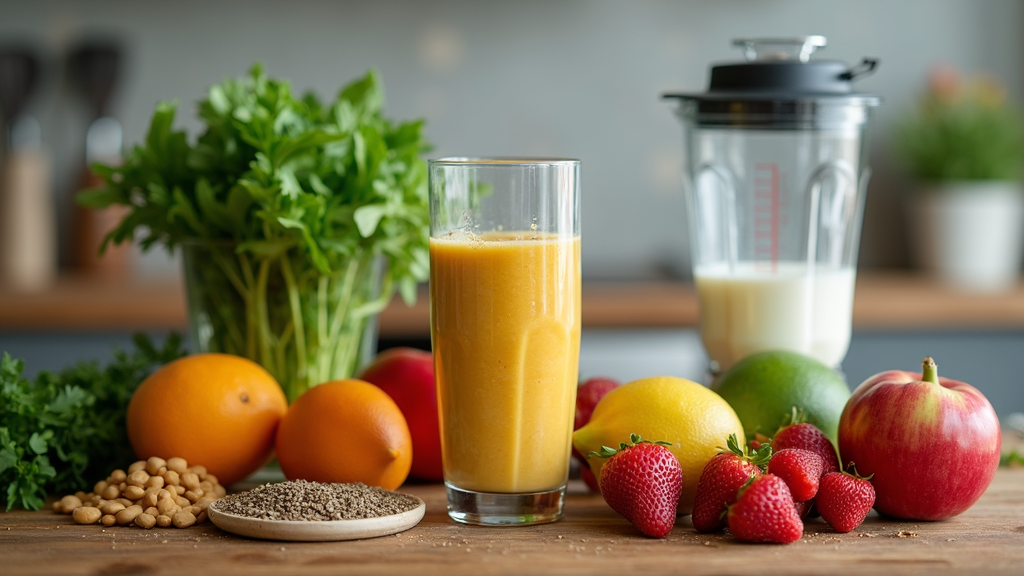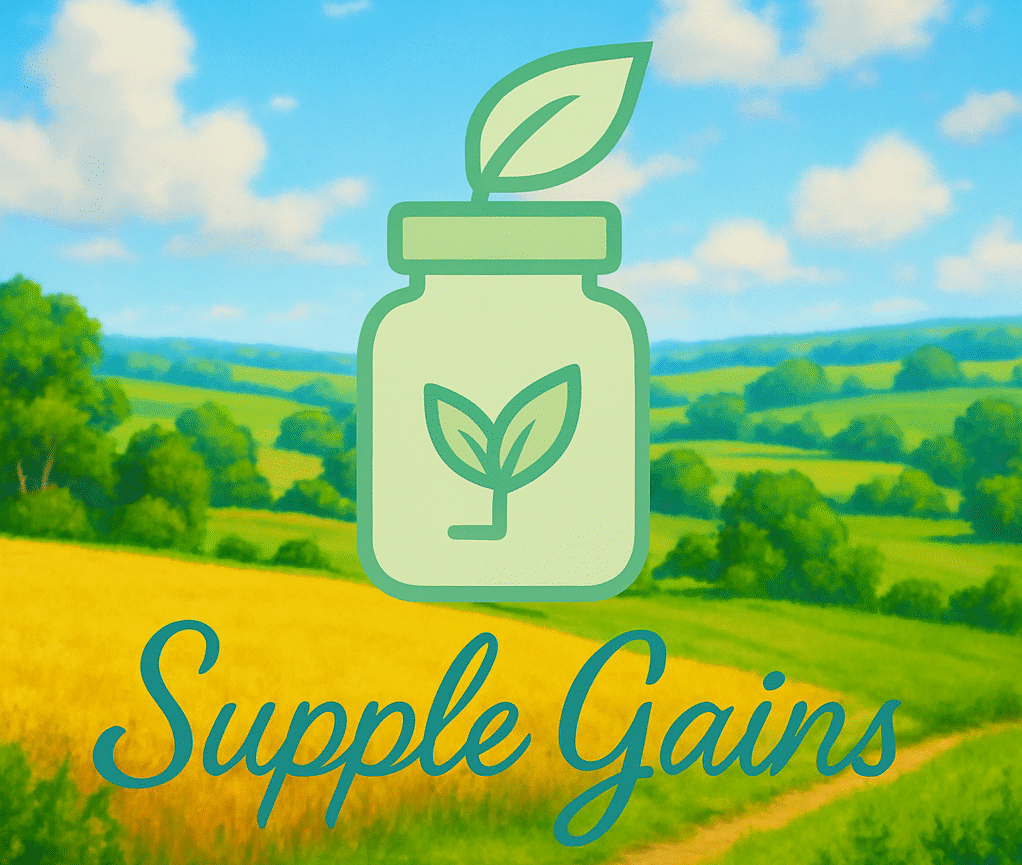If you love smoothies as much as I do, switching to plantbased blends can open up tons of tasty options.
Crafting a great plantbased smoothie goes way beyond tossing some fruit and almond milk into a blender; it’s about smart layering, picking the best ingredients, and mixing in extras for flavor, energy, and that creamy goodness.
So, I’m sharing what‘s been learned from making hundreds of smoothies (with a few kitchen mishaps along the way), to help you whip up plantbased smoothie bowls or drinks that taste amazing and actually fill you up.

Why Focus on PlantBased Smoothies?
More people are adding plantbased foods to their routines, and smoothies are such an easy way to get started.
Plantbased smoothies can pack in vitamins, minerals, fiber, and antioxidants. They’re also friendly for anyone following a vegan or dairyfree lifestyle or those who just want more fruits and veggies without feeling like it’s a chore.
Instead of waterheavy or sugary drinks, plantbased smoothies include a combo of fruits, leafy greens, nuts, and seeds.
That means your blender can help you power through busy mornings, give a boost after a workout, or tide you over in the afternoon without reaching for candy or chips.
Even folks with allergies or food intolerances can flex recipes by swapping milks, skipping nuts, or picking glutenfree grains.
Foundations of the Perfect PlantBased Smoothie
Balance makes a smoothie satisfying. My goto blueprint always includes:
- Base liquid: Nut milks like almond, cashew, or oat milk, or coconut water, all keep things creamy and dairyfree.
- Fruits: Bananas, mango, berries, or pineapple for sweetness, fiber, and nutrients.
- Veggies: Spinach, kale, zucchini, or even riced cauliflower disappear into the flavor but boost nutrition.
- Healthy fats: A scoop of nut or seed butter, hemp seeds, chia, or avocado keeps you full longer and adds creaminess.
- Protein (optional): Plantbased protein powders, silken tofu, or plain soy yogurt give an extra boost, especially handy if you use smoothies as a meal replacement.
Sticking with this structure means you’ll hit the right flavors and textures nearly every time, while cranking up the health benefits. Try rotating different greens or fruits each week, letting you switch up nutrients and flavors as you go.
How I Build Flavors Without Dairy or Refined Sugar
The “secret sauce” is mixing naturally sweet, tangy, and creamy elements. Here’s what works for me:
- If you love thick, icecreamlike smoothies, frozen bananas or mango blend up super creamy.
- Dates, ripe pears, or a splash of 100% fruit juice (like orange or apple) sweeten things naturally if berries or greens taste too earthy.
- Unsweetened almond milk, oat milk, or coconut milk give creaminess without extra sugar or animal products.
- Spices like cinnamon, nutmeg, or cardamom make everything feel cozy, while fresh mint or ginger wakes up citrus blends.
For me, a tablespoon of nut butter like almond or peanut rounds everything out and keeps me fueled, so I don’t crash before lunch. Adding a few drops of vanilla extract can also make your blend smell like dessert.
Tips for Making Your Smoothies Thick, Creamy, and Satisfying
- Go frozen: Keep washed and prepped fruit in the freezer. It blends thicker, chills the smoothie instantly, and keeps things from getting watery.
- Blend in stages: If using sturdy greens or chunky veggies, blend them first with liquid before adding the rest. This helps avoid leafy clumps or uneven texture.
- Start low, finish fast: Start the blender on a slow setting to pull the big pieces toward the blades, then speed it up for a super smooth finish.
- Tweak texture at the end: Add more liquid if it’s stuck, or toss in more frozen fruit or a few ice cubes if it’s too runny.
It took me a while to figure out that greens like kale need extra blending time to fully break down. If you’re using seeds or oats, give them a quick soak or spin in the blender to avoid gritty results. Also, for a richer and even creamier mouthfeel, try adding half an avocado, which blends smoothly and brings extra richness.
Five PlantBased Smoothie Combinations Worth Trying
- BerrySpinach Blast: Blend frozen mixed berries, spinach, flaxseed, almond milk, and a banana for a mix of antioxidants and fiber.
- Tropical Green: Mango, pineapple, coconut water, kale or spinach, and chia seeds. Super fresh, not too sweet, and loaded with vitamin C.
- Chocolate Almond Dream: Frozen banana, cocoa powder, almond butter, oat milk, and a handful of oats for a smooth, almost milkshakelike treat.
- Peachy Ginger Glow: Frozen peach slices, fresh ginger, soy milk, and hemp seeds blend for a zingy, energizing drink.
- Avocado Matcha: Avocado, banana, matcha powder, pumpkin seeds, and unsweetened almond milk—perfect for mornings or postworkout refueling.
I like trying out new flavor combos every week, but having a few trusty favorites means breakfast or snack time never gets dull or stressful. Feel free to swap the base milks with new flavors or sprinkle in a pinch of turmeric for a subtle, earthy note and color boost.
Smart Boosts and AddIns for Nutrition and Taste
- Seeds: Hemp, chia, or flaxseeds are easy sources of protein, omega3s, and fiber. I toss them in almost every blend for energy and thickness.
- Oats: Rolled or quick oats add creaminess and turn a basic smoothie into a real meal.
- Leafy greens: Spinach, kale, and Swiss chard all blend in easily without overwhelming sweeter fruits.
- Superfoods: Maca powder, spirulina, matcha, or cacao nibs add interesting flavors and nutrients, ideal for the adventurous.
- Fresh herbs: Basil, mint, or cilantro bring brightness to otherwise basic blends.
Start small with new addins to see how the flavor works for you. Hemp hearts and spirulina taste strong, so I use about half a teaspoon at first, then adjust up or down. You can also add a sprinkle of granola or a few dried goji berries as a topping for smoothie bowls, giving both crunch and another layer of nutrition.
Cleanup and Storing Leftovers: Keeping It Easy
Plantbased smoothies are simple to prep and store. For quick mornings, I sometimes portion ingredients in freezer bags the night before.
After blending, smoothie leftovers keep in the fridge for up to 24 hours;
just give them a shake or another quick blend before drinking. Some folks pour extras into popsicle molds for a chilled snack, which is worth trying, especially in summer.
If you want to go for ultimate convenience, keep a couple of reusable bottles on hand. After blending, pour any leftovers into the bottle, stash it in the fridge, and you’re set for a snack later.
Just remember to wash your blender right after use—a quick rinse usually does the trick unless you’ve blended something extra sticky.
Avoiding Common Smoothie Mistakes
- Heavy on fruit, light on substance: Allfruit smoothies can spike sugar and leave you hungry. Blending in nut butter, seeds, or silken tofu keeps it more balanced and filling.
- Too much liquid: Start with less, and add more slowly so it’s not watery.
- Skipping greens: Even a small handful boosts nutrition without major flavor changes.
- Not enough variety: I fell into a bananaberry rut until I started swapping in peaches, mango, or pear and mixing up the greens. Changing things keeps your taste buds interested.
- Ignoring temperature: Using only room temperature ingredients can make smoothies taste flat. Frozen ingredients give a fresh, chilled sensation and a thicker blend.
RealWorld Uses: How PlantBased Smoothies Fit Any Lifestyle
I’ve blended smoothies on camping trips (batterypowered blender), used them to sneak veggies into picky kid snacks, and even prepped them as portable breakfasts during busy work weeks.
When you’re dealing with allergies, juggling sports nutrition, or just looking for a gutfriendly option, it’s hard to beat plantbased blends for flexibility and convenience.
- On the go breakfasts: Pour into a travel bottle, toss in the bag, and hit the road.
- Pre or postworkout fuel: Tweak combos to add protein or recovery ingredients, like spinach and pineapple for inflammationfighting bromelain.
- Kidfriendly snacks: Mangospinachlime or chocolateoatmeal blends often get the green light from even the fussiest small humans.
- Dessert replacement: With the right combo of cacao powder and nut butter, some smoothies truly satisfy a sweet tooth while staying plantbased and nutritious.
Frequently Asked Questions
Question: Can you make plantbased smoothies without protein powder?
Answer: Absolutely. Rolled oats, hemp hearts, chia seeds, nuts, and silken tofu all add protein and texture to your smoothie without the need for packaged powder.
Question: How do you make smoothies creamy without dairy yogurt?
Answer: Avocado, bananas, soaked cashews, or plantbased Greekstyle yogurts all create a thick, rich texture without using dairy.
Question: Will leafy greens make smoothies bitter?
Answer: Mild greens like baby spinach or butter lettuce blend into fruitheavy smoothies and are barely noticeable. Stronger greens like kale or arugula can be balanced out by using extra banana, mango, or pear.
Question: How can I prep smoothies ahead of time?
Answer: Premeasure ingredients into freezer bags or containers so you can dump and blend in under five minutes. You can also blend ahead, chill in the fridge, and shake or stir before drinking.
Question: What blender works best for thick plantbased smoothies?
Answer: Highspeed blenders like Vitamix or Blendtec tackle leafy greens and frozen fruit easily. For single servings, personal blenders like Nutribullet are great; just avoid overfilling so everything blends smoothly.
Wrapping Up: My Favorite Everyday Blend
My goto smoothie has frozen mixed berries, banana, a big handful of spinach, unsweetened almond milk, chia seeds, and a scoop of sunflower seed butter. It comes together in a minute, keeps me satisfied, and tastes more like dessert than a salad.
Plantbased smoothies take a bit of experimenting at first, but once you find your favorites, they pretty much become a staple in the kitchen. You might even find yourself craving more greens—I definitely did!
Try some of these combos, get creative with your addins, and see how easy it gets to eat more plantbased meals, no matter how busy life gets.
There’s so much fun in mixing different flavors, and you’ll pick up new favorites as you go. Experiment, blend, and enjoy!
